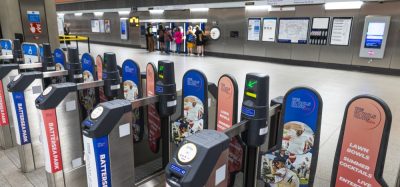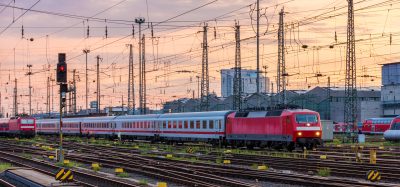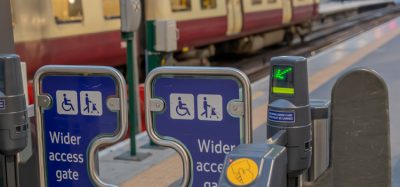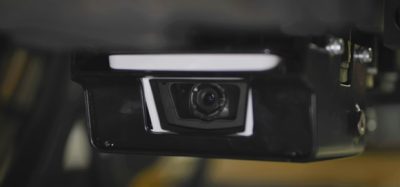Disrupting rail freight: Assessing the role of DAC in industry evolution
Posted: 15 May 2025 | Michal Litwin | No comments yet
Michal Litwin, European Rail Freight Association`s (ERFA) Board Member, and Director General of the Federation of Independent Rail Operators (ZNPK), spoke to Global Railway Review’s Halimah Haque about the potential impacts of Digital Automatic Coupling (DAC) on the rail freight industry and the challenges faced by independent operators in adapting to emerging technologies.


How do you see digital automatic coupling (DAC) affecting the competitiveness of independent rail operators?
We have formed the DAC Voice of Reason taskforce (VORDAC), which includes rail freight operators and associations from Germany, Poland, Czechia, Hungary and Slovakia. Essentially, the VORDAC acknowledges DAC’s potential to improve safety and data exchange. However, we share serious business and technological concerns about its implementation, especially on obligatory retrofit of old wagons. As VORDAC, we warn that rushing DAC deployment could harm the sector’s competitiveness and hinder the modal shift from road to rail.
We warn that rushing DAC deployment could harm the sector’s competitiveness and hinder the modal shift from road to rail
From a perspective of independent Railway Undertakings (RUs), promised benefits are relatively small and very uncertain when compared to the total cost of ownership (TCO). It is important to consider TCO, and not only capital expenditure (CapEx), which DAC enthusiasts assume can be 100% funded by the EU.
In any case, what will not be covered by any state or EU funding are operational costs throughout the entire lifespan of these devices. For example, an average wagon can operate for about 30 years. The existing screw coupler solution is the most durable part of the wagon. On the contrary, DAC is quite a sophisticated device. It has electronics, cables, a power supply and data transmission systems.
Join our free webinar: Rail cyber-security in a time of technological and regulatory transformation
Join our expert panel, including speakers from Nokia and Siemens Mobility, to explore the critical convergence of cybersecurity and 5G rail comms.
Date: 3 Dec | Time: 15:00 GMT
Can’t attend live? No worries – register to receive the recording post-event.
Therefore, when it comes to the maintenance of DAC in hard conditions – dust, vibrations, rain, heat, cold, and every weather condition you can imagine – it’s quite certain that DAC maintenance by nature will be more expensive.
This means that every offering for every kilometre and every tonne of goods transported will bear a portion of this maintenance cost. The real question is not whether the costs will increase – as that’s obvious – but whether this increase will be compensated by other kinds of savings, which could be bigger. The answer from part of the market, particularly where block trains operate, is that they don’t see this as an opportunity right now.
All in all, we believe and are quite certain that broad deployment of DAC at the current stage would decrease competitiveness because it would increase our costs, particularly operational costs. Even if 100% of the CapEx is funded, it would decrease spending on other areas, as the EU budget for railways is not unlimited. Spending 20 or 30 billion euros on DAC means not spending 20 or 30 billion euros, for example, on infrastructure, new lines or ERTMS.
I recall the Connecting Europe Days held in April 2024 in Brussels, where the CEO of DB Cargo claimed that DAC is supported by everyone. This is not true. It’s important to acknowledge that not everyone is in favour of a hasty, one-size-fits-all approach.
The European Rail Freight Association (ERFA) has not signed the joint letter supporting DAC and has now clearly pointed out that DAC can only be an optional, and not obligatory, solution. Further, we state that the EU must first finish the deployment of ERTMS, before starting another massive project. Also, many national rail freight associations, like Die Guterbahn from Germany, ZNPK from Poland or ZESNAD from Czechia express their objections, and this voice of reason cannot be ignored.
Do you think DAC will level the playing field or favour larger players?
That’s a good question. I will answer with another one: why is this solution so strongly supported by DB Cargo, yet they won’t go for DAC on their own and increase their competitive edge, but they want to oblige the entire market to switch to this solution? Do they really care so much about the condition of their competition?
Clearly, there are doubts that it can favour larger players, particularly when it comes to access to public funding. Bigger companies, often state-owned, tend to have better access to public financing. We have observed this in the past quite frequently.
Go for DAC if you need it in your company and your clients sees the benefits of it, but don`t force others to follow your technological solutions
Even more importantly, it may also have a bad impact on internal competition. We have experienced this with silent breaks, where once incumbent players have been backed with a subsidy for deployments, many RUs were restricted to access key corridors because those lines were defined as ‘silent lines.’
I am afraid that the same thing might happen again with DAC. My message is clear: go for DAC if you need it in your company and your clients sees the benefits of it, but don`t force others to follow your technological solutions, neither block their access to corridors using lack of DAC as an excuse, to limit competition.


With DAC improving efficiency, do you foresee shifts in the market and how might it change the industry landscape?
I don’t see much improvement in efficiency with DAC. First of all, the majority of trains in Europe are block trains, meaning that they go back and forth without many coupling or decoupling operations. There may be some segments where it could be useful, but it’s definitely not broad, and it’s not what my members are asking for.
As Director General of ZNPK, I’ve never experienced my members asking me to speed up DAC deployment. On the contrary, I’m regularly asked by my board members how we can prevent this craziness from happening, and how can we make it not obligatory. These are requests from operational directors and board members who have decades of experience in the rail freight market and know how to compete against tough competition, like road transport.
So, I believe that the first part of the question assumes something that is not necessarily true.
As for consolidation, it’s largely irrelevant here. I believe that DAC would increase our costs without providing benefits in exchange. This would weaken the overall competitive position of freight.
If costs increase without benefits, it’s possible that smaller players will find themselves under greater pressure and maybe we’d see some consolidation, but it’s not something we as an industry should be expecting or aiming for. And this is certainly not something that policymakers focused on the Green Deal, sustainability and modal shift should be expecting either.
How important is regulation and standardisation in ensuring DAC benefits independent operators?
Of course, when it comes to regulation standardisation it’s essential, especially if there’s a phase out and phase in of DAC at some point. Whether I’m for or against it, DAC should be standardised. We must learn from the experience with ERTMS. We cannot have different components or different sub-components from different providers that don’t talk with each other – it must be standardised.
Second, it should also be affordable because, at the end of the day, the unit price at the CapEx level is related to future maintenance costs. Right now, if we assume a DAC device costs around €20,000 – €25,000 or more per unit (or €40,000 – €50,000 per wagon), it’s a different story and business case compared to if it cost €1,000 or €2,000.
Today, DAC enthusiasts are asking the European Commission to subsidy the massive transition with some €13 billion. Leaving aside our opinion that these costs are highly underestimated, and the ultimate figure could reach between €20‑30 billion, even this €13 billion is half of current CEF allocation for entire transport! We believe that rail freight has many different priorities on how ‘railway money’ could be spent in the most efficient way. Infrastructure and ERTMS have clear priority.
We support new technologies, but only those that are solving real problems – problems that are raised by the market, not the ones invented
The real issue lies with access to funding and aligning that with regulatory aspects. For example, if you’re barred from entering a specific line without DAC, but that line is operated by a larger player, it could harm competition. We want to ensure that risk doesn’t materialise. This is a lesson we’ve learned from deployment of other so-called ‘great technologies’ that were supposed to save rail freight but didn’t. In fact, the overall market share is decreasing rather than increasing.
I want to emphasise that we support new technologies, but only those that are solving real problems – problems that are raised by the market, not the ones invented by those who already have some great solutions to be sold.
What future trends do you anticipate in the rail freight industry?
As I mentioned earlier, I think the focus should first be on technologies we’ve already started deploying, like ERTMS which hasn’t been broadly deployed yet. If we could magically switch it on across the board, we’d welcome it because it would make things like border crossings and international transport much easier.
I would strongly suggest focusing on automation, especially automated locomotives, as both the rail and road industries face labour shortages. We could save costs and improve our operations, by utilising the huge potential there.
Of course, we also have future technologies like FRTMS and the shift from 5G to 6G on the horizon, which will enable more devices and better data transmission. Digitalisation and autonomous operations should also be a key focus.
The key is to listen to the market, operators and customers, who understand the real need. If a technology like DAC offers clear benefits to a particular segment, then operators in that segment should invest. But broad, mandatory implementation for everyone, especially in areas that don’t need it, will only drive up costs without delivering value.


Global Railway Review Autumn/ Winter Issue 2025
Welcome to 2025’s Autumn/ Winter issue of Global Railway Review!
The dynamism of our sector has never been more apparent, driven by technological leaps, evolving societal demands, and an urgent global imperative for sustainable solutions.
>>> Read the issue in full now! <<<
Issue
Related topics
Cargo, Freight & Heavy-Haul, Digital Automatic Coupling (DAC), Digitalisation, Freight, Funding & Finance, Operational Performance, Regulation & Legislation, Rolling Stock Components (Interior/Exterior), Rolling Stock Maintenance, Technology & Software








